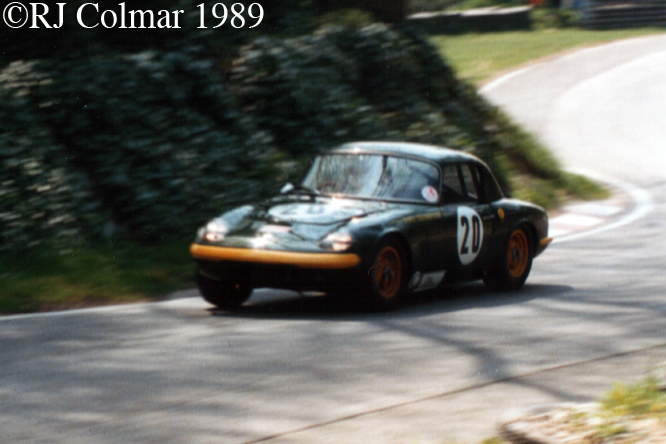The Lotus 26, designed by Ron Hickman of Black and Decker Workmate fame, was first shown to the public in October 1962 with the more familiar Elan name. The Elan was Lotus second attempt at making a primarily road vehicle after the all fiberglass unitary bodied Elite, which had proved too expensive for Lotus to manufacture and make a financial return.
Unlike the unitary bodied Elite the Elan’s fiberglass body was mounted on a ‘steel backbone chassis’ a variation on an idea which can be traced back at least to Rover in 1903 and was subsequently examined and or used by among others Morgan (1910), Tatra (1923) who still use the idea on their contemporary heavy military vehicles, Joseph Ganze’s Adler MaiKaefër (1931), Porsche Type 12 (1931) that with Tatra patents and under Ganzes influence became the VW Type 1 (1938), Skoda 420 Popular (1934), Mercedes Benz 170V (1935) and 170 H (1936), MG R-Type (1935), the Polish PZInz 403 Lux-Sport (1937), Clisby Special (1952), fiberglass bodied TVR MK1 / Grantura (1958), Alpine A108 (1959) that evolved into the fiberglass bodied Alpine A110 (1961) and Triumph Herald (1959), a design which was used to form the basic Vitesse (1962), Spitfire (1962) and GT6 (1966) backbone chassis.
Mounted in the, fabricated from sheet steel, back bone chassis was a 1558cc / 96 cui 4 cylinder iron block aluminium head Lotus Twin cam engine, which was matched with independent suspension and disc brakes on all for wheels. The Elan was sold with either soft or removable hard tops. Soon after becoming available racing teams turned their attentions to preparing the nimble Elan for racing with the likes of Lotus works driver Jim Clark, Graham Hill and Jackie Stewart all competing in privately entered Lotus Elan’s.
For 1964 Colin Chapman incorporated many of the ideas learned from the Elan privateers into the 26R built specially for racing, such as the example of Tony Thompson seen at Cadwell Park back in 1989 above, of which 97 were built in 2 distinct series between 1964 and 1966.
The hard top roadster only 26R was around 200lbs lighter that the original Elan, had revised suspension and could be ordered with either Cosworth or BRM tuning package for the Lotus Twin Cam motor, whose 116E block can be traced back to the Ford Consul Capri. Legend has it that the best tuning option was the Cosworth block matched with a BRM head, though I cannot rationalize why this might be the case nor have I substantiated this, if you know please do not hesitate to chime in below.
John Miles is credited with being the most successful 26R driver ‘in period’ clocking up 15 wins for the Willment team to secure the 1966 Autosport Championship. It is thought that 97 26R’s were built and supplied either complete or in tax saving kit form between 1964 and 1966.
Race preparation expert and Lotus aficionado Tony Thompson was in the middle of forth and final HSCC Classic & Sports Car championship wining season when I took these photo’s at Cadwell Park where he dominated the race. Tony possibly lays claim to being the most successful R26 exponent in historic events having used this same #26-R-20 chassis to win the HSCC championship from ’85-’87 and finished runner up in ’88/’90/’91 and 1993 before turning his attentions to racing a Formula Junior Lotus 27 in which he won the FIA Formula Junior championships 1996 to 1998 inclusive !
Thanks to Ray Bell, Pete Taylor, Tim Murray, Steve Holter, Roger Lund, David McKinney, willga, AAGR, David Birchall, JtP1, cheapracer, Greg Mackie, Geoff Butcher, Lee Nicole, johnny yuma, Catlina Park, 312f1, and Karl Ludwigsen who kindly responses to the ‘Backbone’ thread at The Nostalgia Forum and helped identify some of the vehicles with backbone chassis prior to the advent of the Elan.
Further thanks to David Birchall, Edward Fitzgerald, Pete Taylor and ‘the Oracle’ for identifying Tony’s chassis number and clearing up a few other aspects of Elan identification.
Thanks on this ‘Tuning Options’ edition of ‘Gettin’ a li’l psycho on tyres’, I hope you will join me again tomorrow when I’ll be looking at a unique Bristol. Don’t forget to come back now !



